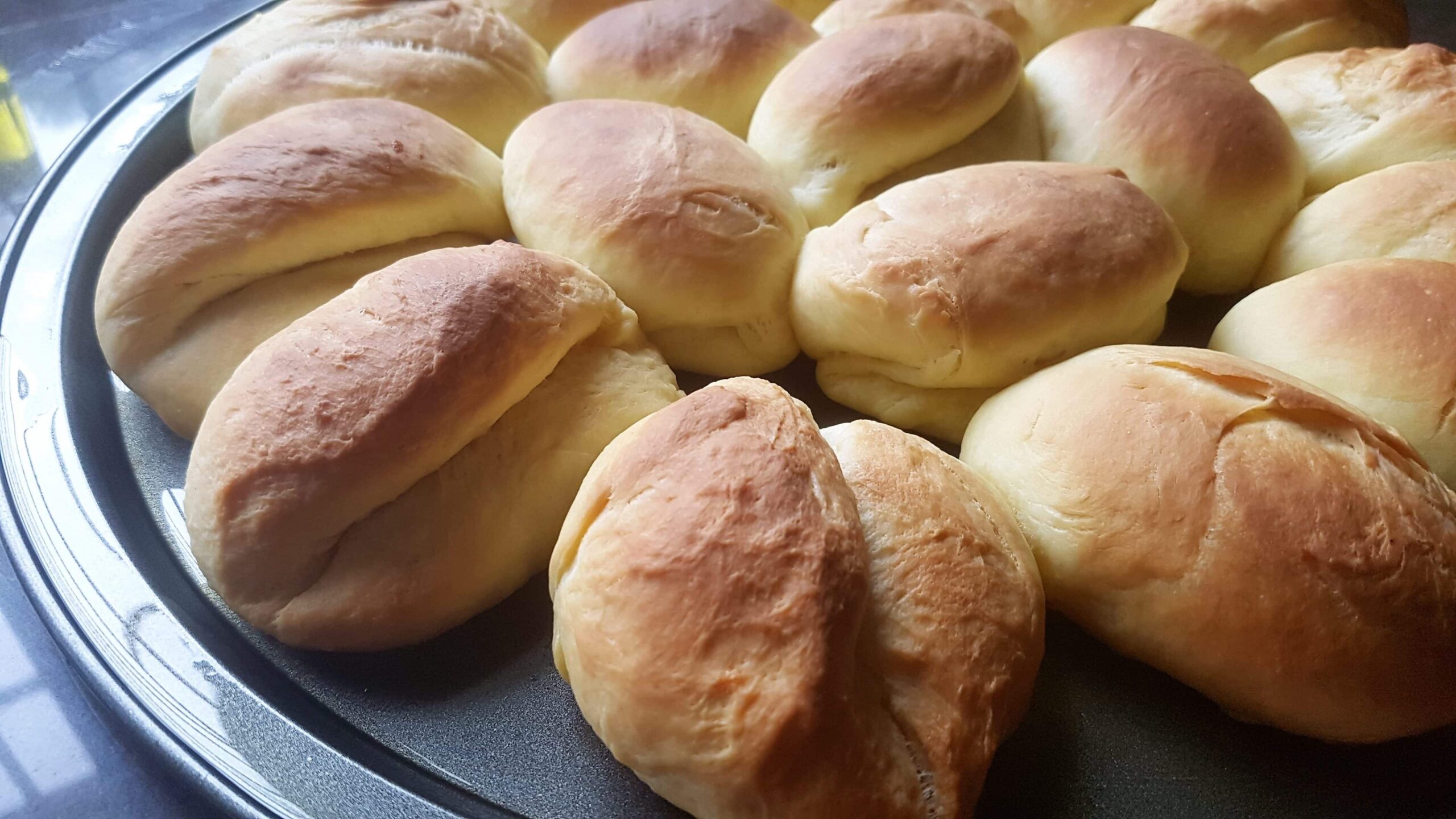For last night’s Dinner Club session, I needed a few good sides to serve with my roast lamb shoulder, and while surfing around the Net I came upon this site which lists out some really good side dish suggestions. Who can resist good dinner rolls, let alone rolls completely coated in butter before baking. I just had to try this out, and they did not disappoint. I don’t think I’ll be making dinner rolls any other way from now on.
Updated 25 Dec 2017 with new photos. Made this again for this year’s TurkeyFest. I was reminded the hard way how my Kenwood mixer really wasn’t for me when it comes to making bread dough, so I ended up going old school and kneaded the dough by hand. The dough was still wet and I used a bit more than 5 cups of plain flour. I’m going to try using bread flour next time to see if this yields better results. I also decided to divide and shape the dough by hand instead of using a cookie cutter, which saved me a lot of time and avoided any wastage. Delicious!
Based on the recipe by the Kitchn.
Parker House Rolls
Makes about 36 rolls
Ingredients
- 1 tablespoon active-dry yeast (about 1 11-gram package)
- 1/2 cup plus 1 tablespoon sugar
- 1/2 cup warm water
- 200ml full cream milk
- 227 grams butter, divided
- 2 eggs
- 2 teaspoons salt
- 4 to 5 cups bread flour
Directions
In a large mixing bowl or a bowl of a stand mixer, add the yeast, 1 tablespoon of sugar and warm water, and stir until just combined. Let stand until the yeast has dissolved and become foamy, about 10 minutes.

In a saucepan over medium low heat, combine the milk and half of the butter. Set over medium-low heat until the butter has just melted.

Add the remaining 1/2 cup sugar and stir until sugar is dissolved.

Set aside until just barely warm; you should be able to comfortably hold your finger in the liquid for several seconds. The mixture should also register below 43 degrees C on an instant-read thermometer. Add the eggs and stir until thoroughly combined.

Add the milk mixture to the bowl containing the yeast mixture.

Add 4 cups flour and salt…

…and stir using a wooden spoon until no more dry flour is visible. Keep adding more flour until the dough no longer sticks to the bowl.
Knead for 8 minutes using a stand mixer with a dough hook, or 10 minutes by hand. My Kenwood mixer just can’t seem to do it right, so I prefer to do this by hand. The dough is ready when it is smooth, slightly tacky, and holds its shape in a ball when lifted. Transfer to a clean surface and knead once or twice to shape into a tight ball.

Clean out the mixing bowl, film it with a little oil, and transfer the dough back to the bowl.

Cover the bowl with a damp towel or a plastic wrap and let rise in a warm place until doubled in size, 1 to 1 1/2 hours.

Transfer the dough to a lightly dusted surface.

Using a sharp knife or dough cutter, divide the dough into four equal sized pieces.

Working with one piece at a time, divide the dough into three equal sized pieces.

Further divide each third into another three equal sized pieces. Repeat for the remaining thirds.

Repeat the above steps for the remaining dough. That should give you 36 pieces in total.
Lightly grease a few baking sheets with olive oil. Working with one small piece of dough at a time, roll into a ball with your palm for about 10 seconds.

Using your palm and fingers, flatten the dough into a flat disc, about 1/4 to 1/2 inch thick.

Using the blunt side of a knife or a spatula, score each piece of dough slightly off center.

Fold the larger half over the smaller half. Press down slightly to ensure the rolls stay closed.

Arrange on the baking sheets slightly spaced apart. Repeat until all the dough is used up.

Melt the remaining half of the butter, in a bowl in the microwave for 1 to 2 minutes, or over low heat on the stovetop.

Dip the rolls in the melted butter until completely coated.

Repeat for all the remaining rolls.

Cover loosely and let rise for 30 to 40 minutes. If you are making these rolls in advance, cover and refrigerate for up to 24 hours.

While the rolls are rising, preheat the oven to 190 degrees C (fan 170 degrees C). Arrange two racks at the bottom and top thirds of the oven. If using refrigerated rolls, Let stand at room temperature for 30 minutes to an hour while oven is preheating.
Bake the rolls until golden, swapping the trays around once midway through baking, 15 to 20 minutes.

Serve warm.



Leave a Reply